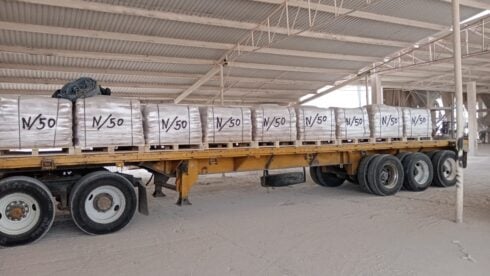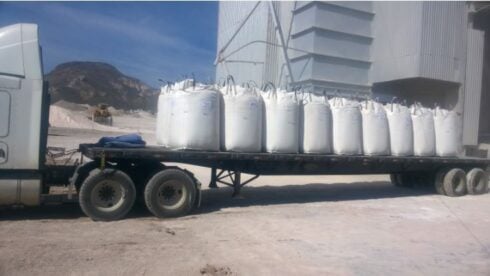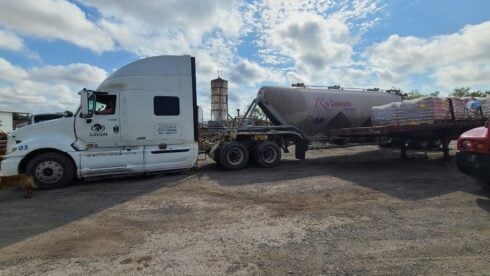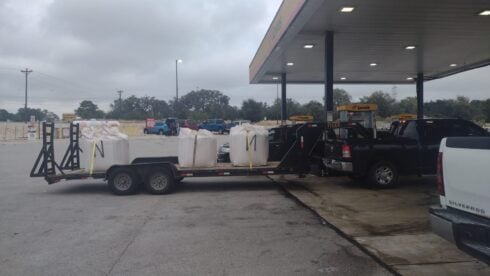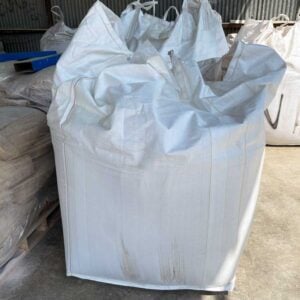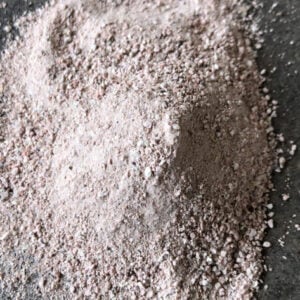Bentonite Pond Liner is an eco-friendly pond liner and a great alternative to polymer liners. You obtain the same benefits plus it is environmentally friendly, natural, and non-toxic. Additionally, it is puncture and tear free and suitable for cattle, livestock, irrigation, and wildlife.
Bentonite clay pond liner can last for decades without any major maintenance.
Quote your Bentonite Pond Liner today to save water and money.
Count on a full pond when you most need it.
Benefits of Bentonite Clay Pond Liner
Sodium bentonite is a natural clay that swells up to 12 times its size. The bentonite is applied to the bottom of the pond and swells at contact with water, therefore creating a layer of compacted clay soil that will help hold water inside the pond. Unlike rubber or plastic liners, bentonite can fill any gap, slit or crevice, sometimes around a tree root or a rock. One of its biggest advantages? No puncture risks. Sodium bentonite keeps your pond as close as possible to a natural environment. Being a 100% natural clay, you add to the ground a component that will blend perfectly into the pond’s ecology and give you an excellent result for a very low cost and a very long time.
- Effective Seal – When correctly applied, the created seal is very strong and long lasting.
- 100% Natural – You won’t be adding any artificially produced materials to the soil.
- Cost Effective – Comparable investment to other liners, lower long term maintenance costs.
- Absolutely Safe – Totally safe for stock, fish, ducks, wildlife, plants, swimming, etc.
- Puncture Free – Bentonite is an active liner that can repair small crevices or gaps by itself.
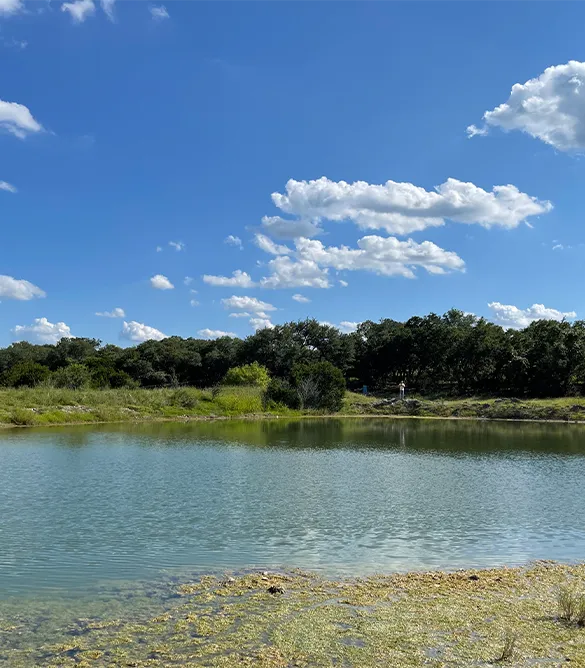
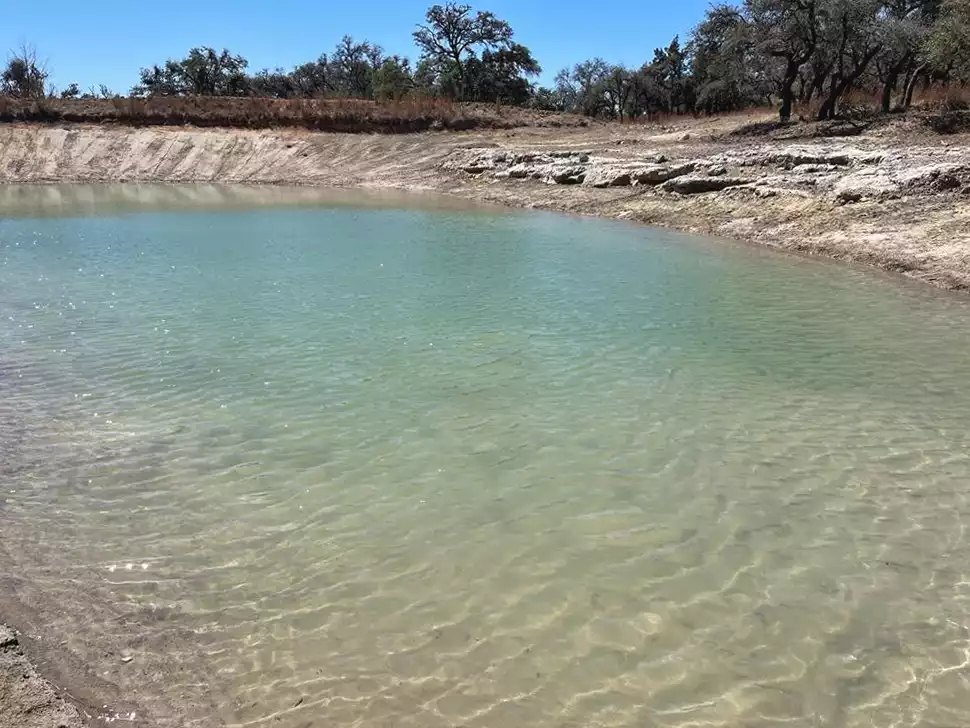
Who can use Bentonite Pond Liner?
Anybody can use Bentonite, Bentonite pond liner is suitable for almost any pond, Some of our clients use it on:
- Farm & Ranch Owners – We have experience building retention, fishing and recreational ponds.
- Residential Developments – Retention and recreational ponds are part of residential construction since the 1970’s.
- Municipalities & State Governments – Any requirements for retention, wildlife and fishing ponds can be served.
- Golf Courses – We have had the pleasure of building ponds for several goal courses in Florida and California.
- Businesses – Venues for weddings and other social events put their trust in us to make their ponds to look idyllic.
- Homeowners – Many suburban owners have trusted us to build and line their recreational ponds with bentonite.
Pond Liner Near You
We deliver Bentonite Pond Liner nationwide, including but not limited to the states of Texas, Nevada, Wyoming, Idaho, Louisiana, Arkansas, Oklahoma, New Mexico, Montana, Nebraska, Colorado, Utah, North, and South Dakota.
We build, fix and line ponds using Bentonite pond liner in Texas
Bentonite Clay – Application Flash Card
A very general explanation of the process of application of bentonite clay pond liner. Please keep in mind this should NOT be taken as expert advice. If you need help with the application of your bentonite pond liner, contact us at 1-800-608-5112
To apply the liner, only some simple construction equipment is required, the kind that can generally be found at most farms and ranches. Professional application is highly recommended, or professional guidance if you choose to DIY.
There are 2 main methods for applying bentonite clay as a pond liner. It will depend on the condition of your soil and your pond to decide the best one for your particular needs. For both methods, start by cleaning the pond site as much as possible. Remember, we need to compact the bentonite layer we will apply, so remove debris or any other materials that can get in the way of the compaction process.
Blanket Method
It tends to be the most effective bentonite application method.
Start by removing about 6-8 inches of soil and depositing them by the edges of the pond or lake.
Add the layer of bentonite, attempting to create a layer as smooth and even as possible.
Drop back in the soil that was removed from the area, and proceed to compact the soil to become an even layer on top of the bentonite layer, “trapping” the bentonite between the soil of the pond and the soil that was removed in the first step.
Slowly fill the pond or lake, in order to avoid disturbing the recently created layer of bentonite.
Allow 3-5 days for the bentonite to activate and naturally create the waterproof seal.
Mixed Blanket Method
This method doesn’t require removing soil from the bottom of the pond.
Just till or disk the bottom of the pond about 8-12 inches deep.
Deposit the bentonite into the tilled soil and mix it into the ground using a similar process (can be raking too) to mix the bentonite into the layer of soil that was tilled.
The goal is to obtain a soil-bentonite mix that is as even as possible throughout the bottom of the pond.
Compact the mixed soil-bentonite layer and slowly let the water flow into the pond, trying to disturb the recently created layer as minimum as possible.
Allow 3-5 days for the bentonite to activate and naturally create the seal that will prevent water seepage.
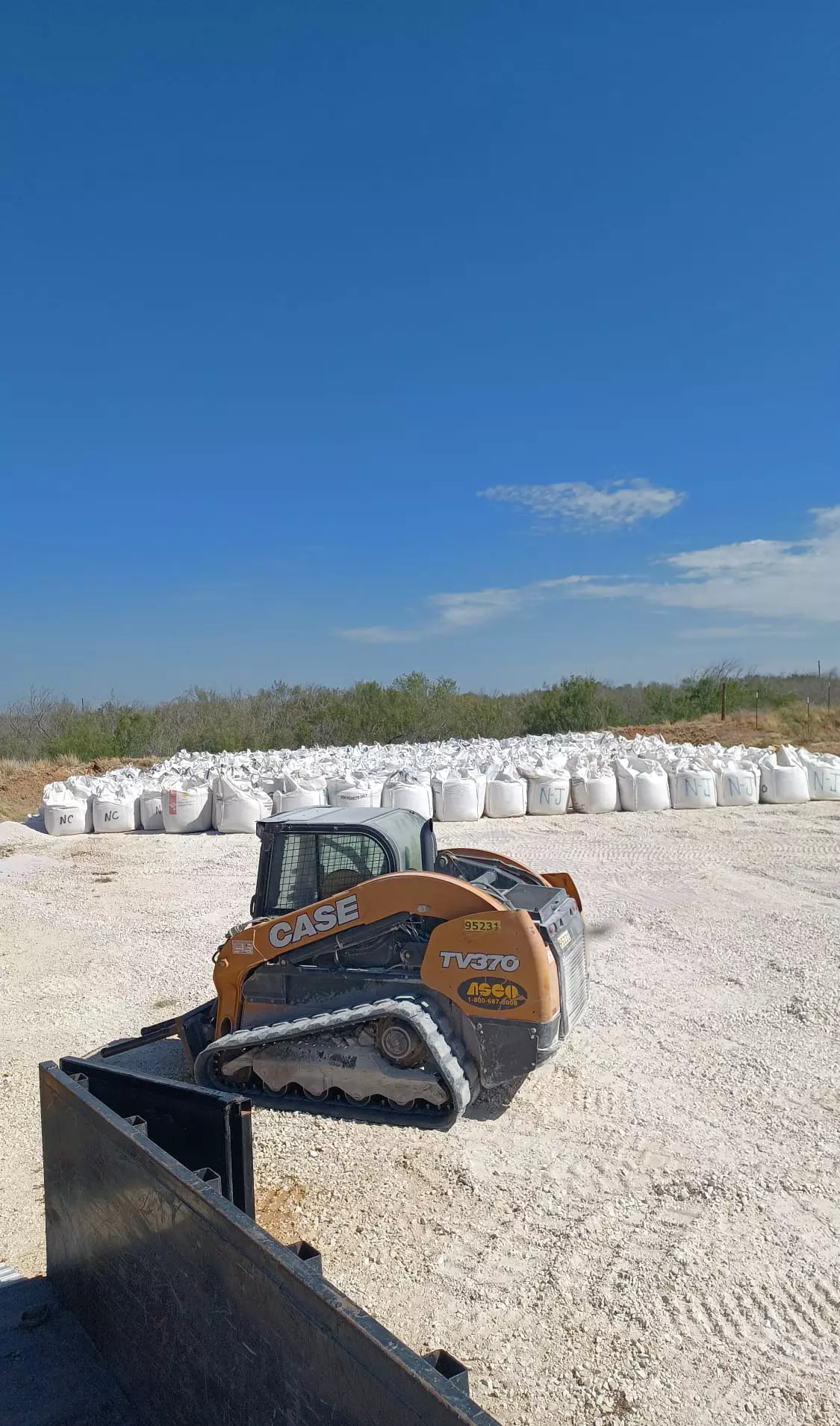
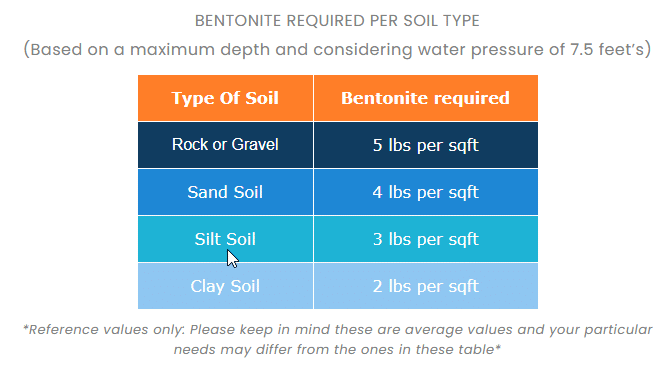
Amount of Bentonite Required for Pond Lining
The amount of bentonite pond sealer varies according to the type of soil of the site of the pond. For very porous soils that are made mostly of rock and gravel, it is usually recommended to use between 5 and 6 lbs per square foot of surface, while for a soil with some clay in its composition it is between 1 and 2 pounds per square foot.
Keep in mind that when we refer to “surface” or “area” we mean the area of the bottom of the pond, which is a volumetric surface. Many people calculate the area as if it were a flat surface, consequently obtaining an incorrect amount of required bentonite pond liner.
The present table offers a reference, depending on the volumetric surface of the area of your pond and the type of soil at the pond’s location.
Bentonite Clay Pond Liner – The Lonestar Minerals Formula
Lonestar Minerals is a bentonite wholesaler. Over time, it has developed its own “formula” for pond liner, using sodium bentonite as the only ingredient. Our Bentonite Pond Liner Mix Mesh is unique and has been developed using our 50+ years of experience in the field. We are involved in mining our bentonite to milling and delivering a selected type and quality bentonite for your industry and application.
The mix of bentonite particles and granular bentonite allows us to take advantage of the properties of both grain sizes, helping reduce the amount of bentonite required per square foot* (*compared to other sources of bentonite clay for ponds).
We work with an extensive delivery network and can reach most states of the United States within 1-2 days. We have availability from a single 5-gallon bucket with 50 lbs of bentonite pond sealer up to full truckloads of bentonite for pond construction, delivered in paper bags or 3,000 pounds super sacks.
We also offer the out-in-the-field application of our product to your pond, when purchasing a minimum of 45,000 lbs (one full truckload). We can’t stress enough the importance of a CORRECT APPLICATION of the bentonite layer in your pond, so you can enjoy the results for several years.
We pride ourselves in conducting our business with Integrity, providing truthful consultation services (yes, we will honestly tell you if bentonite is not the best solution for you) and operating under laws, legislation and policies. We value People, rather than things. Our main goal is to aid our customer’s success and to know our staff is proud to be working with us.
Buy Bentonite Pond Liner
Our Clients are saying
Bentonite Pond Liner FAQ’s
Is bentonite better than passive pond liners?
Every pond liner has it’s advantages and disadvantages and, of course, there are several schools out there. We believe that passive pond liners are a good option for garden ponds (maybe two or three thousand square feet), but when it comes to farm ponds, ranch ponds or artificial lakes, bentonite is less prone to puncturing or degradation. In our experience the initial investment is quite similar. Still, bentonite has the upper hand in the long term, with fewer maintenance costs and creating a natural pond ecosystem and not just a water retention tank.
Can I apply the bentonite by myself?
When purchasing the bentonite with us, we are pleased to guide you through the process of applying the bentonite yourself if you have the equipment and the willingness to do so. If it is not possible to do the application yourself for any reason, we are also able to take our team to your property to do the application process for you.
Does the pond have to be empty to be lined with bentonite?
We recommend applying the bentonite to a dry pond. It can be applied to a pond with water (wet application), but that introduces several more variables into the equation, and it may not be as effective as applying it to a dry pond.
What are the other uses of sodium bentonite clay?
Sodium bentonite is used in many different industries. Some examples are drilling mud for construction or oil industries, pond liner and pond sealer for farms, ranches, golf courses and other venues, groundwater barrier for treated water, binding agent for green sand molds in foundry, cat litter for the pets industry, among others.

